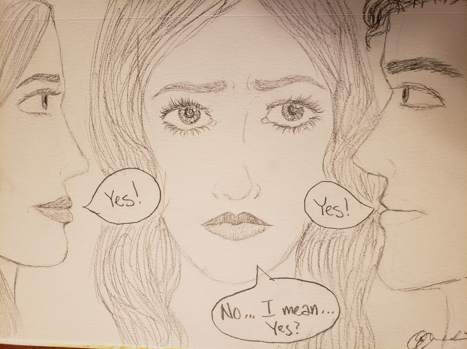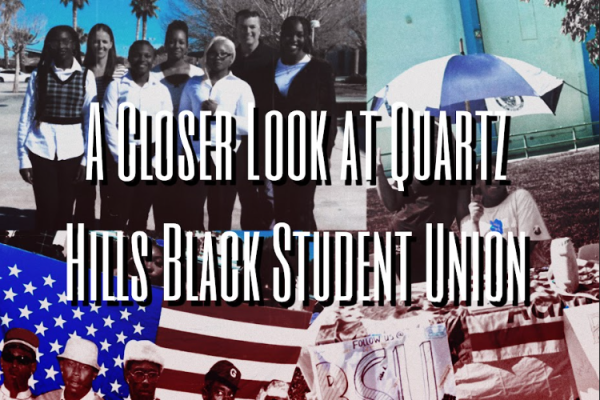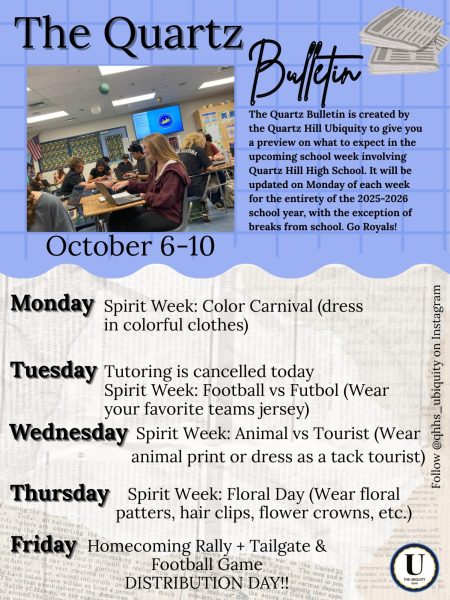Peer Pressure at Quartz Hill

From the clothes we wear to the things that we say, many of our decisions are ruled by peer pressure. Despite the various attempts adults have made to make us wary of such social pressures, teenagers today are still predisposed to be influenced by their peers. As high schoolers, it can be difficult to break free from the conformities of our social groups out of fear of being judged or feeling alone.
Mr. Jerry Boyd, one of the school’s psychologists, offered some compelling insight regarding the manner in which peer pressure can affect a student’s academic performance. When students feel lonely, they want to fit in with a certain group, and they will change their behavior and standards to do so. Mr. Boyd stated, “I have also witnessed students who, for various reasons, had problems “fitting in” with certain groups due to a concern that they would be viewed as ‘too smart.’ They will then purposely not work up to their potential, in an effort to be accepted by certain other students.” However, Mr. Boyd has also witnessed students putting in more effort into their schoolwork in order to fit in with a group of students that they perceive to be more prestigious and admirable in their work ethic and natural skill. The groups that students try to fit into can vary depending on their core values and which groups they feel would be easier to fit into as well.
Mr. Manthey, the ASB advisor and psychology teacher, helped explain the power of social influences in class. He shared that he sees peer pressure as a relatively new phenomenon, only having witnessed it for about five years. Despite this short amount of time, Mr. Manthey claims to already have observed the workings of negative peer influences on previous good students. Yet, he also shed much light on the positive effects of peer pressure between graduates, new students, and between classmates. “[Students] take the example from previous students and want to emulate, or copy them because they have seen [graduates’] success. They think that if they take the same classes and compete for the same things, they can be number one… I think [classmates] feed off each other more than they want to compete with one another.”
Beyond some teachers’ lines of sight, however, high school students still face peer pressure in social settings. Despite this, several teenagers do not necessarily have negative experiences with this. Frances Garingalao, a freshman at QHHS, claims to have experienced only positive peer pressure, but she has seen it affect other students at QHHS in a negative light as well. “With our generation, it is just a certain way to act around certain people to be considered ‘cool’.” She believes that social influences play a significant role at our school.
For other students, though, peer pressure is nothing but harmless behavior. Freshman Sadi Noor testified that he had never been faced with peer pressure in a positive or negative manner: all of his experiences were simply neutral. He said the only times he had encountered social pressure was when he was with his friends, and they egged each other on to do “stupid dares.” When questioned on his thoughts on peer pressure overall he stated, “It is a good thing because things like bullying and peer pressure are not as big of an issue as the state of California makes it out to be… [Peer pressure] is something friends do to each other, but not for the sake of harming each other.” Contrary to Garingalao’s belief, Sadi opined that peer pressure was not a serious issue within the school, but rather outside of it.
While some students are fortunate enough to not face the forces of outside influences, not all are so lucky. In spite of the best attempts of teachers and other adults to help students, their efforts can often prove futile. Mr. Manthey pointed out, “Teachers can only do so much. Students are going to spend more time with their peers, and teachers only have an hour with their students a day.” He explained that in psychology, this effect was known as the mere exposure theory, a concept that suggests that the more exposure we have to a stimulus, the more we tend to like it. Because of this, Mr. Manthey firmly believes that “ultimately, it is the students that need to come up with the realization that their friend groups may not be the best for them.” He also emphasized that if students face issues when it comes to societal conformities, that they should find an outlet to talk it out with, whether it be a friend, partner, teacher, parent, or other trusted person.

In one word, I describe myself as colorful. I adore watching sunrises and sunsets, reading books by candlelight, going on picnics with the stereotypical...

I’m Ola Elmahdi, a young, less than energetic editor of the Ubiquity. My favorite article from the Ubiquity is probably “Modesty: Not Always a Virtue”...







